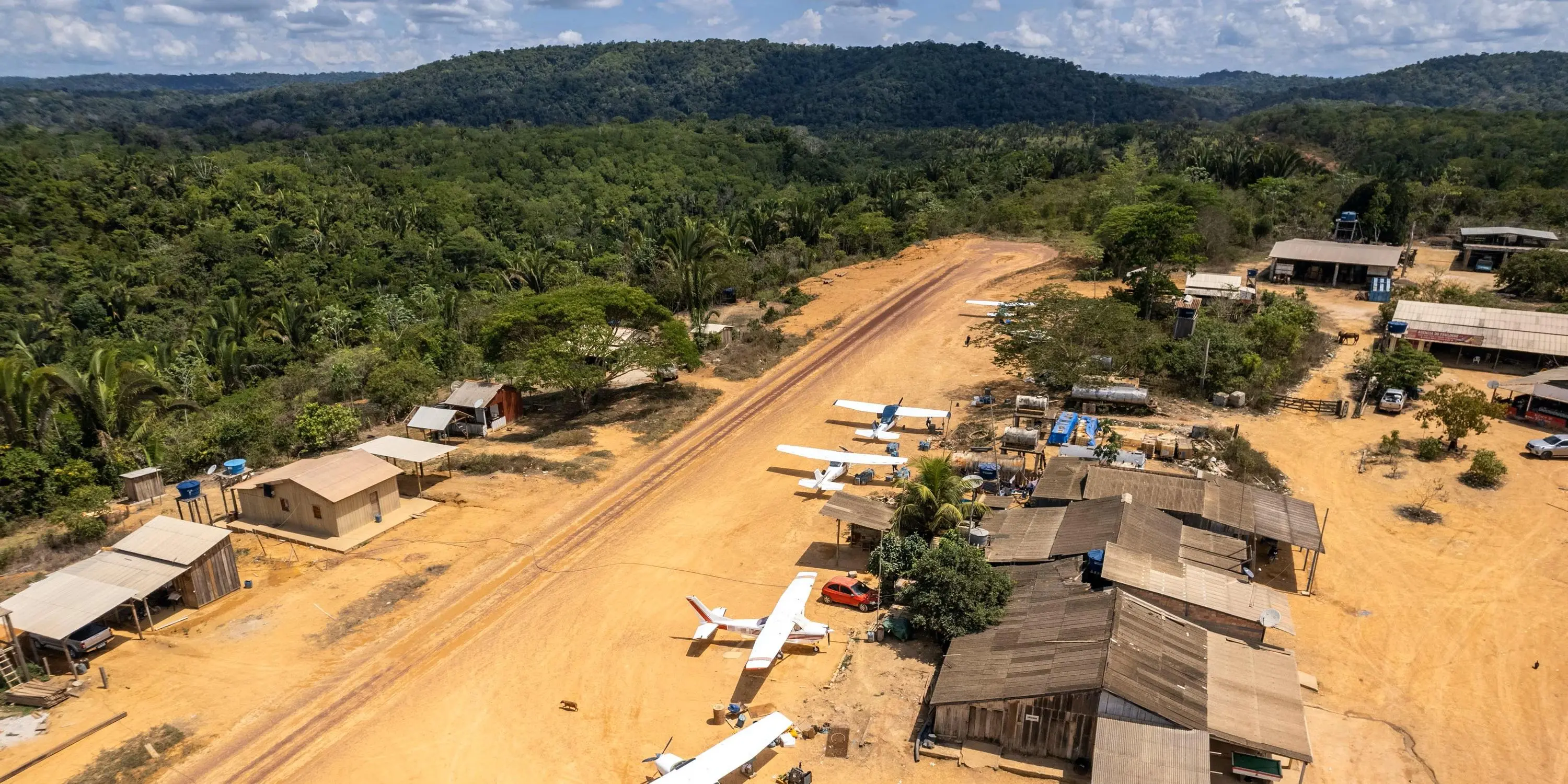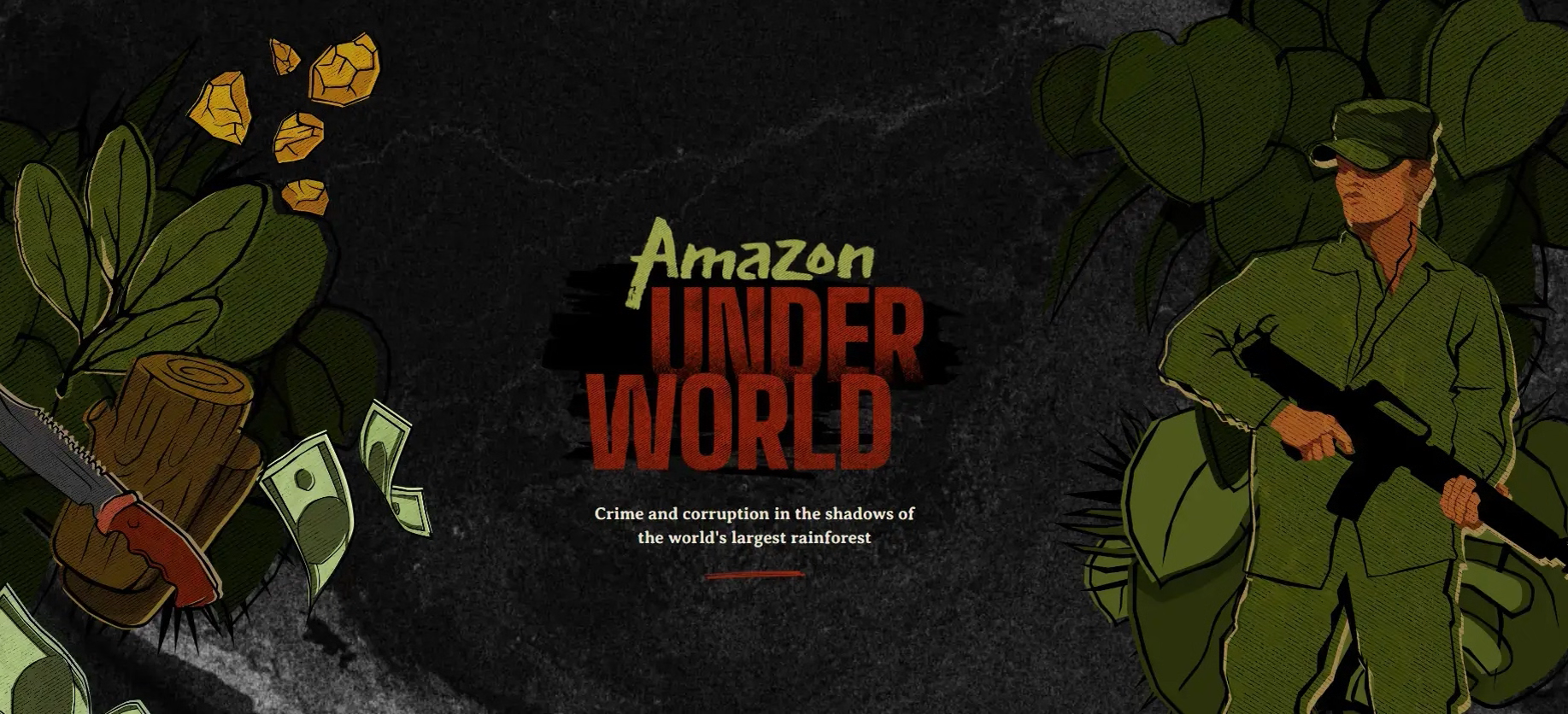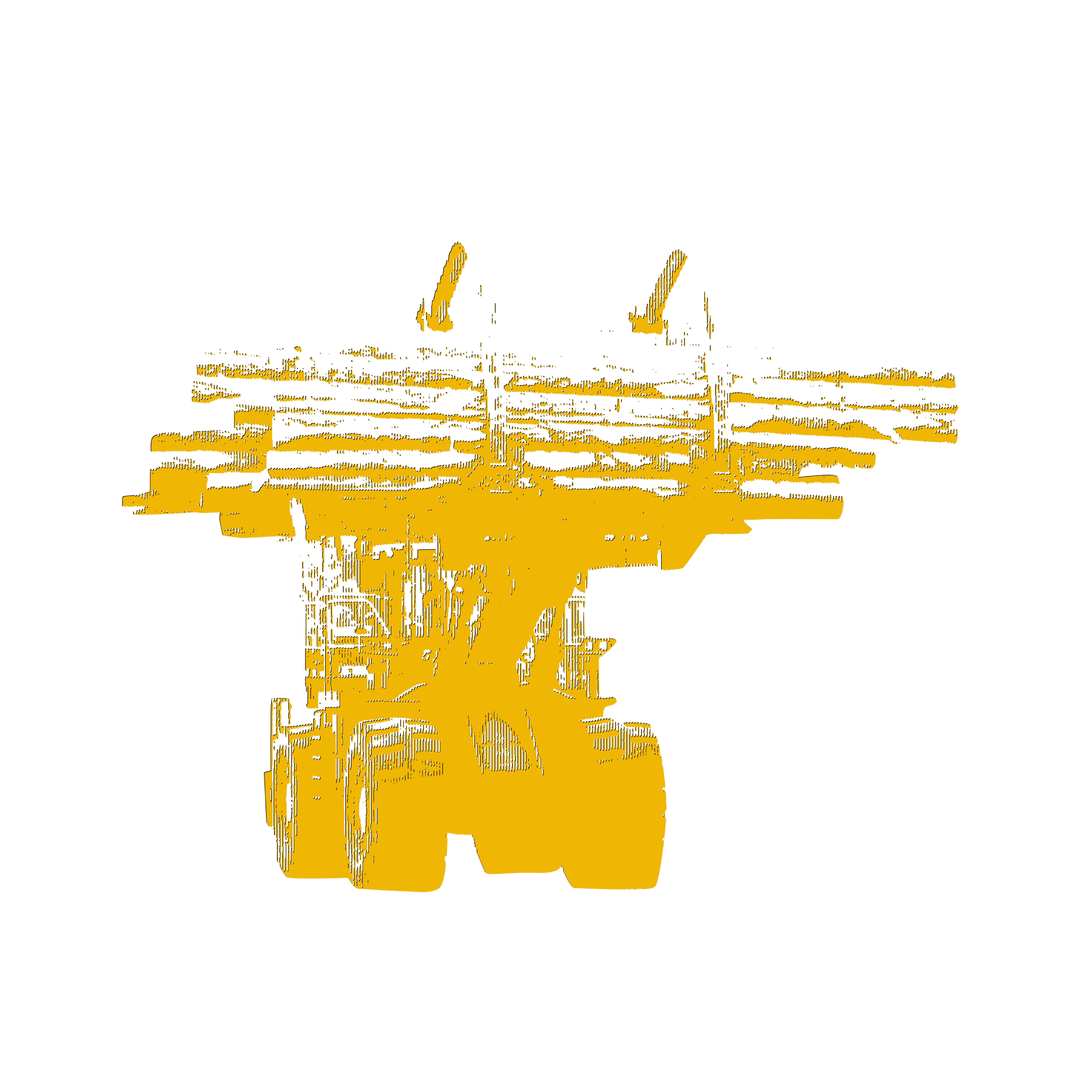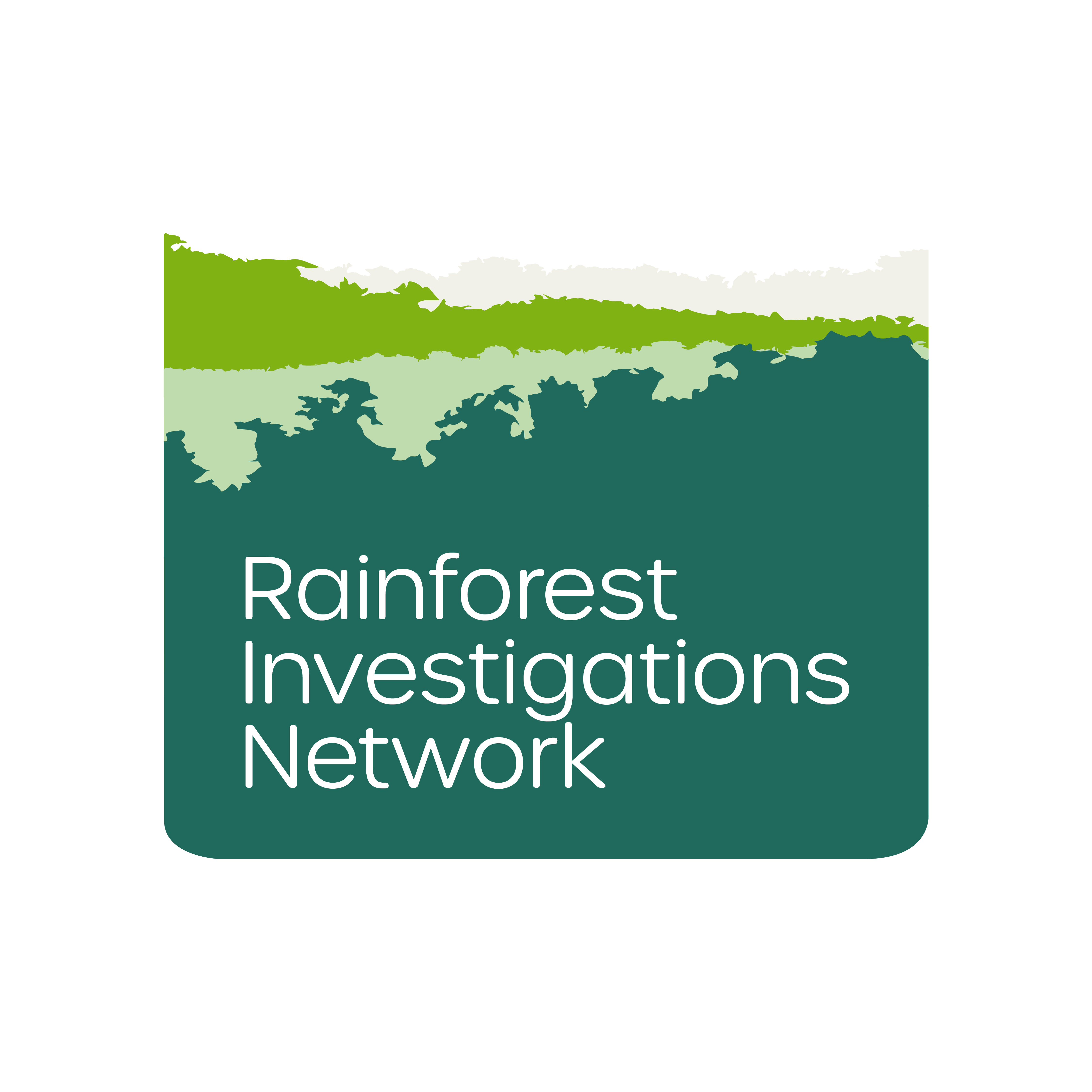Targeted by armed groups, criminals and mining companies, journalists are using technology to bring attention to the world’s biggest rainforest

Targeted by illegal logging, mining and farming, the largest and most biodiverse rainforest in the world is under threat. But the journalists and activists drawing attention to the Amazon are also in danger.
The recent killings of The Guardian contributor Dom Phillips and Indigenous expert Bruno Pereira have brought this reality to an international audience. For locals and other journalists reporting on the Amazon, however, the rainforest has always been dangerous. Before Dom and Bruno, the high-profile murders of Brazilian unionist Chico Mendes in 1988 and of U.S. nun Dorothy Stang in 2005 caused outrage worldwide.
Many others disappeared and died without any international attention. A recent report commissioned by the Brazilian Catholic Pastoral Land Commission (CPT) found that 202 people were killed in the Amazon region across Bolivia, Ecuador, Colombia, Perú and Brazil in 2020, 2021 and 2022. The report found that Indigenous people and small farmers in Brazil have been the main targets of violence throughout the Pan-Amazonian region.
I spoke to three members of the Pulitzer Center's Rainforest Investigations Network to find out what it’s like to investigate the Amazon and how they deal with the dangers of drawing attention to illegal activity and environmental damage to the forest in Brazil, Colombia and Perú. Hyury Potter is an Amazon-born and raised freelance reporter. Bram Ebus is a criminologist, investigative journalist and consultant for the International Crisis Group’s Latin American office. Ivan Brehaut is a journalist specialising in covering Indigenous peoples. Here’s how they are covering one of the biggest stories right now.
As a nonprofit journalism organization, we depend on your support to fund journalism covering underreported issues around the world. Donate any amount today to become a Pulitzer Center Champion and receive exclusive benefits!

Bolsonaro’s impact
“The Amazon has always been dangerous,” Brazilian journalist Hyury Potter said. As a local journalist who was born and grew up in the region, though, he’s also seen changes in recent times.
Since coming into power in January 2019, Brazilian president Jair Bolsonaro has systematically weakened the government measures to protect the Amazon and defunded some government agencies. Among these are Funai, which oversees Indigenous affairs and where Bruno Pereira headed the isolated Indigenous people’s division until 2019, and Ibama, Brazil’s main environmental enforcement body.
The Brazilian Congress is also considering two bills that would further remove legal protections and have been widely condemned by environmental and Indigenous groups. One of them has been dubbed the ‘death package’ and the ‘bill of devastation’ by activists in the country.
“In the past three years, it became more difficult to try to stop deforestation, to stop the illegal miners. Another thing that’s increasing with these illegal activities is organised crime realising that you can make a lot of money in these activities, that we have weak control from the government, and that they have an easy way to do money laundering,” Potter said.
As organised crime groups advance into the Amazon, the rainforest is becoming an even more perilous place for journalists.
“It's very dangerous. And I'm a local reporter, so I always thought I was more in danger than any foreign reporter from the United States or Europe, because when someone from Brazil dies in the Amazon the world doesn't pay too much attention. A few months before Bruno and Dom got murdered, another environmental agent was killed in the region of the Javari Valley and the world didn't notice. So I always thought, okay, I'm an easy target,” Potter said.
Potter recently took a reporting trip with other colleagues, including Rainforest Investigations Fellow Manuela Andreoni, as part of a joint investigation for the New York Times and The Intercept Brasil into illegal airstrips supplying illicit mines in Indigenous territory.
While on that trip, Potter and his colleagues stayed in close contact with an editor in Rio de Janeiro, sending them their location and messages to confirm they were okay every two to three hours, as well as letting them know who they would speak to, exactly where they would meet them and why.
Potter and the Rainforest Investigations Network team are now working on adding the location of the airstrips they uncovered to the interactive Amazon Mining Watch map, which uses satellite imagery and machine learning to map mining activity in the rainforest.
Potter also worked on another innovative tool to expose illegal exploitation of the Amazon. The project, Amazonia Minada, uses a machine learning system to download public data regarding mining requests in Brazil and overlap it with the shapefiles of protected areas, such as Indigenous land or conservation units where mining is not allowed, plotting it on a map. There is also a Twitter bot which tweets every time a mining request on protected land is found.
“The goal was to help other journalists. There are more than 2000 illegal mining requests in Brazil and I can't handle all these requests alone. It's something that even a big newspaper can't handle alone. So if you open this database to the other journalists, you can find a lot more stories and you can reach more people,” Potter said.
Colombia and armed groups
Colombia has the highest number of Amazon killings per country recorded in the Pastoral Land Commission report: 120 people from 2020 to 2022. Of these, 25 were killed in 2022, including human rights activists.
According to Colombia-based Dutch investigative journalist and NGO consultant Bram Ebus, the particular danger of the Colombian rainforest stems from the country’s violent history.
“Most of these conflicts are about access to land. If you control the land, you control the populations that inhabit these regions and also its natural resources and trafficking routes. Colombia, together with Perú and Bolivia, is a coca-producing country. Around 90% of the cocaine seizures in the United States have Colombian origin,” Ebus said.
Violent groups justify their involvement in these conflicts in various ways: far-left guerrilla groups claim to be fighting for communist ideals and far-right paramilitary groups say they are fighting communism.
In 2016, the Colombian government signed a peace deal with the FARC, the largest guerrilla organisation. But this deal didn’t end violence in the country, which continues to endanger communities in the Amazon.
“Before [the agreement] certain areas were only under the FARC control,” Ebus said. “Now the state has failed to fill the void left behind by the FARC and we have several armed outfits warring for control. And since these remote and often state-abandoned areas do have local populations inhabiting them, these local populations have community leaders, environmental activists and human rights defenders that speak up against land grabbing, and all these illicit economies that prey on the environment and steal lands from local populations. These community representatives are a prime target for non-state armed groups because they meddle with their interests. And if you have a community of a few thousand people that only has one voice through its community leader, it often works to kill the community leader to make everyone be silent,” Ebus said.
To investigate the Colombian rainforest, Ebus has travelled to areas controlled by armed groups and spoken to people involved in organised crime and trafficking for projects such as his investigation into the illegal trade of mercury.
Ebus’ non-judgemental approach to interviews has allowed Ebus access to people involved in the country’s illicit economy. As impunity for crimes in Colombia is very high, these people are less fearful of being arrested and prosecuted, and more willing to talk.
Taking reporting trips in areas outside of the state’s control requires thorough planning in order to stay safe. “I'm in a security protocol, where we have coordinators following up on my situation,” Ebus said. “But we also work through local contacts. If an armed group works in a territory and has a certain relation with local populations, that's not necessarily always adversary. These community leaders are basically the intermediaries between us and non-state armed groups. So if we want to enter a territory in which the sole authority is a criminal organisation or a non-state armed group, we need them to know that we're coming. Because if we rock up without previous notice, they might think we're state investigators, intelligence, or other people meddling with their interests and they might be very hostile.”
Local contacts are also necessary for regular check-ins about the security situation before and during a reporting trip, as well as to be made aware of how to best stay safe once in the area. “It's often in the details like, can we wear sunglasses or not? Can I take a picture or not? Can I show GPS equipment or not? Because if you break one of these rules, it can mean your death,” Ebus said.
These precautions are to keep everyone safe, not just the investigative journalists themselves. “The most important for me is the security of our sources. We might ask difficult questions, and risk ourselves a bit, but then we leave the territory. But the intermediaries we consult with and the sources we interview stay in these hostile environments. So it's very important to consult with them about what we can do and what we shouldn't do,” Ebus said.
Understanding the reasons why people may turn to illegal activities and even organised crime is key to uncovering the full picture of what is happening in the Amazon, according to Ebus, who holds a degree in criminology.
“We don't want to criminalise or stigmatise, we often know that [people] turn to criminal behaviour as a consequence of failing public policies, state abandonment, and lack of access to medications. We want to understand the illegal miner, the smuggler, the member of a crime syndicate or armed group because there are often very valid reasons why these people work in those environments and those activities,” Ebus said.
This is the case everywhere in the Amazon region. In Colombia, “both the perpetrators and victims of conflict drive the razing of forests,” as Ebus wrote in an op-ed for Newsweek. In Brazil, many of the land grabbers taking over protected land for farming come from poor families who arrived from other regions of the country, chasing a dream that has been advertised to them even by the government.
Perú and Indigenous issues
Nuanced and well-rounded reporting is also important when it comes to Indigenous issues. Perú has a large Indigenous community. According to the most recent census, taken in 2017, there were 104,488 people above the age of 12 recorded as being native or Indigenous to the Amazon, around 0.4% of the total population (including the Shipibo-Conibo tribe). Despite this, the news coverage of Indigenous issues in the country is “really poor” according to Peruvian journalist Ivan Brehaut, who focuses on this area.
Part of the problem is a narrow focus. “The media only covers the conflicts about land, mining projects and oil projects. They’re not covering the real issues in Perú for the Amazon people or the Andean people,” Brehaut said. He believes that his 30 years of experience travelling and working in the Amazon, both as an investigative journalist and in a variety of other roles, help him see the threats to the Amazon with more clarity.
“My daily job is to talk to the [Indigenous] people and try to understand their motivations, and then try to write these underreported stories not only about the failures of the system but about the problems with oil, mining and logging companies. I report on Indigenous corruption too.”
As well as investigating external threats to Indigenous communities, such as illegal roads, Brehaut also looks into “corrupt Indigenous people that are making money dealing with the companies, dealing with the illegal loggers, dealing with land grabbers, and sacrificing their own people.”
Who are these people? “They are politically well-placed,” he said. “They are really recognised by regional politicians so they are functional to their interests and they try to claim benefits to accept projects or to sell the lands. They are claiming benefits from the companies and at the same time they are dealing with the government, obtaining local political power, so it’s a really complex situation.”
Brehaut’s investigations pose significant risks to his personal safety, and this affects his day-to-day life: “I have been threatened, with people approaching me in the street saying, ‘Ah, you’re a writer! Take care of yourself. We’re watching you.’ On another occasion, a person very close to me said that people were asking for my address. I try to have the lowest profile I can to avoid these threats.”
Brehaut writes for LaMula.pe, an online journalism outlet. But he doesn’t think mainstream media recognises the kind of journalism that he does. “In Peru, journalists that are taking these risks and obtaining information that I think is quite valuable aren’t really recognised by big news organisations. TV channels, radio stations or newspapers don’t care about these situations. They don’t care about how many crimes are around the violations of Indigenous rights,” he said.
The journalists I spoke to highlighted the complex and delicate nature of the threats facing the Amazon. It’s not a clear-cut struggle between good people who want to protect the forest and bad people who want to exploit its resources. The reality on the ground is a lot more nuanced, and going out into the field to talk to a wide range of people allows them to convey this.
In order to do so, however, they are risking their own safety and forced to take extensive security precautions and navigate volatile situations. The Rainforest Investigations Network was started by the Pulitzer Center in 2021 to foster collaboration and innovation within investigative journalism in the world’s three main tropical rainforest regions: the Amazon, the Congo Basin, and Southeast Asia. Through this network, this year’s fellows—19 journalists from 12 countries including Potter, Ebus and Brehaut—have found a way to support one another.
“We talk every month and we share questions and doubts about our investigation,” Potter said. “It’s good to hear what other colleagues think about what you are investigating. It’s very helpful.
Editor's note. Data on Amazon killings come from the Cendro de Documentação Dom Tomás Balduíno (CEDOC/CPT). More information can be found here.












